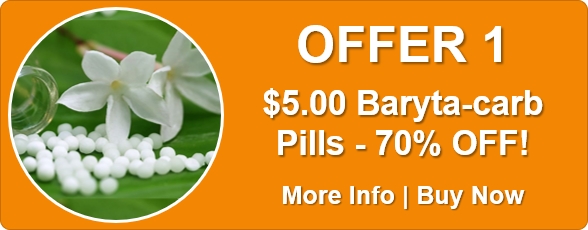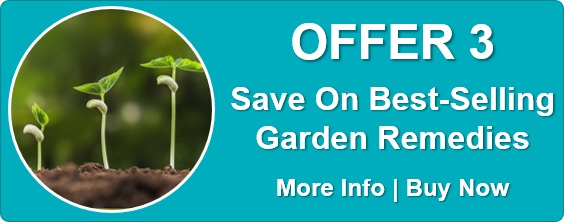Tutorial 6 – Provings

“Proving” is a homeopathic term referring to the testing of a substance on healthy human volunteers to determine the symptoms it produces (and therefore treats).
Provings
Homeopathic remedies originate from a vast array of substances. Prior to use, each substance undergoes clinical trials with healthy individuals to identify the symptoms it could potentially treat in those who are unwell, according to the Law of Similars.1
These trials involve administering safe quantities of the substance to healthy human volunteers (provers) to generate symptoms. The term “proving” is derived from the German word “prufung,” meaning “test” or “examine.” Symptoms generated during a proving are documented in a homeopathic materia medica (a record of substances and the symptoms they produce) to aid homeopaths in finding and prescribing that substance in the future. Homeopaths believe that if a substance can produce a set of symptoms in healthy provers, it will have a curative effect when prescribed to those who are unwell with similar symptoms.
How is a Proving Conducted?
Safe but Effective
Provings test substances on healthy volunteers using safe, sub-molecular doses at the thirtieth centesimal potency.2 Several pilules are administered daily until the prover experiences symptoms, at which point doses are discontinued. Since substances are not given in their crude, chemical form, provers are neither poisoned nor harmed.3 All symptoms vanish upon the completion of a proving. Testing substances in potency also yields the advantage of generating a wider range of symptoms than if it were tested in its crude form.4
Only the Healthy
Provings are carried out on healthy individuals instead of those who are sick to ensure that the recorded symptoms originate solely from the substance and not from any pre-existing illness.
What many people may not realize is that if they consistently take a homeopathic remedy when it is not needed or more frequently than necessary, they may also experience a proving. Fortunately, any symptoms generated during a proving are resolved once the remedy is discontinued.
Spare the Animals
Provings are not conducted on animals. Apart from ethical concerns, animals cannot provide accurate information on the symptoms they are experiencing. They also have a different physiology to humans and react in different ways. For example, the venom of a funnel-web spider can kill a human but has no effect on a cat. Penicillin, on the other hand, is deadly to guinea pigs. Provings on animals cannot provide reliable information and are unnecessary.
Moderation at all Times
Provings seek to reduce all influences that may corrupt the raw proving data. For this reason, provers avoid substances that could exert symptom-producing effects during a proving. Their diet consists of nutritious but plain food while stimulants such as coffee, tea, and alcohol are excluded. The prover also has to avoid activities that could have a stimulating effect or trigger emotional reactions.
Who’s to Know?
Provings have been conducted for over 200 years but with the increase of scientific rigour, more recent ones have been conducted “double-blind” and with a placebo control. This means that both provers and supervisors involved in the proving do not know what is being tested, or, who is receiving placebo and who is receiving the potentised substance. Such measures help to reduce “observer bias” that could influence the reporting or recording of symptoms.
Both Sexes
Provings are conducted on both male and female provers to draw out the full range of effects. For instance, along with its other symptoms, Lilium tigrinum (potentised Tiger Lily) can produce ovarian pain and menstrual irregularities, symptoms that would have been lost if the remedy had only been tested on males.
Full and Complete Symptoms
When symptoms appear, the prover tests them against a range of variables called “modalities”. Modalities are conditions that modify a symptom, making it better or worse. The prover checks what effect activities such as lying down, sitting, standing, temperature changes, motion, eating, drinking, touch, times of the day, and so on, have on the symptom.
Not Alone
A supervisor is assigned to each prover. While the prover is responsible for documenting each symptom in their own words, the supervisor’s role is to review the symptoms daily with the prover to clarify descriptions or obtain missing information, such as modalities. All symptoms are recorded in a journal as raw data without interpretation by the prover and supervisor.
Complete at Last!
A proving is considered complete when no new symptoms can be produced from a substance after multiple tests in various potencies across a range of constitutions, ages, and genders. To date, over 5,000 substances have been entered into the homeopathic materia medica, with some being more comprehensively proved than others.
Additional Information
Homeopathy is a holistic system of medicine. When a person is sick, symptoms often involve the mental, emotional, and physical aspects of their body.
Similarly, a proving generates symptoms across these areas. For instance, the proving of Bryonia alba (White Bryony or Wild Hop) created physical symptoms such as joint and muscle pain and a splitting, bursting headache, both worsened by movement; fever with intense thirst; and a painful, sore throat. Emotionally, the provers were irritable and wanted to be left alone. Mentally, they expressed a continuous desire to “go home” during fever-induced delirium.
Since the first proving of this substance in 1816, Bryonia alba has been frequently prescribed with great success for types of influenza where sufferers exhibit these symptoms. Alternatively, if the flu produces different physical, mental, and emotional symptoms such as constant movement to alleviate pain in muscles and joints that worsen when keeping still; painful throat on empty swallowing; weeping for no known reason; suspiciousness; and fever accompanied by increased restlessness, the remedy Rhus toxicodendron (Poison Ivy) would be used, as these were the symptoms produced during its proving.
Not every prover experiences all of a substance’s symptoms during a proving. Some provers develop many of them, while others experience only a few. The symptoms experienced by each prover depend on their individual sensitivity, underlying constitution, and areas of susceptibility or weakness (topics to be explored in later tutorials). For this reason, substances should undergo a series of provings across a range of constitutions.
Common Questions
What Sort of Substances Are Used in Provings?
Any substance can be used in a proving. Most remedies are proved from raw animal, vegetable or mineral matter, but chemicals, processed materials and even imponderables (energies that have no mass such as radiation or magnetism) can and have been proved.
Where do Provers Come From?
Most provers are drawn from the ranks of homeopathic practitioners and students. Many willingly donate their time (and their bodies) to contribute to the knowledge base of the profession and to obtain first hand experience of the nature of a remedy they may need to recognise and prescribe for future patients. In the process, provers are rewarded by strengthened vitality.
Can Provings Damage Health?
Properly conducted provings do not harm health. In fact, they improve it. The human body is designed to develop strength through the process of overcoming daily challenges to its homeostasis (equilibrium). For example, exposure to a wide variety of food develops strong and healthy digestion, emotional resilience is improved by a variety of stimulating experiences, and the immune system is strengthened by exposure to viruses and infections. In the same way, a proving is a controlled challenge to the homeostasis of the body. The substance being tested creates symptoms according to the prover’s individual weaknesses and temporarily creates a state of imbalance. The vitality or life force of that prover (known as the Vital Force in Homeopathy) reacts to restore balance and return the individual to health. In the process, vitality is strengthened, weaknesses are corrected and the person becomes more resistant to the problem in the future.
This claim of improved health through provings originated with Hahnemann, the founder of Homeopathy, and his life certainly seemed to demonstrate the truth of it. In spite of proving over 100 substances on himself, he lived to the good age of 88 years at a time when this was considered exceptional. Since then, many other Homeopaths have confirmed what he said as they too have added to the homeopathic knowledge of how to relieve suffering through the process of provings.
1 See Tutorial 1
2 See Tutorial 3 & 4
3 See Tutorial 5
4 See Tutorial 5
Tutorials
- Homeopathy: an Introduction
- Tutorial 1 – The Law of Similars
- Tutorial 2 – Law of Similars Discovered
- Tutorial 3 – Potentisation
- Tutorial 4 – Three Scales of Potency
- Tutorial 5 – Benefits of Potentisation
- Tutorial 6 – Provings
- Tutorial 7 – The Vital Force
- Tutorial 8 – Potentised Remedies and the Vital Force
- Tutorial 9 – Palliation, Supression or Cure?
- Tutorial 10 – Direction of Cure
- Tutorial 11 – Return of Old Symptoms
- Tutorial 12 – Homeopathy and Other Medicinal Therapies
- Tutorial 13 – Finding a Good Homeopath
- Tutorial 14 – That First Appointment
- Tutorial 15 – What to Expect (Part A)
- Tutorial 16 – What to Expect (Part B)





